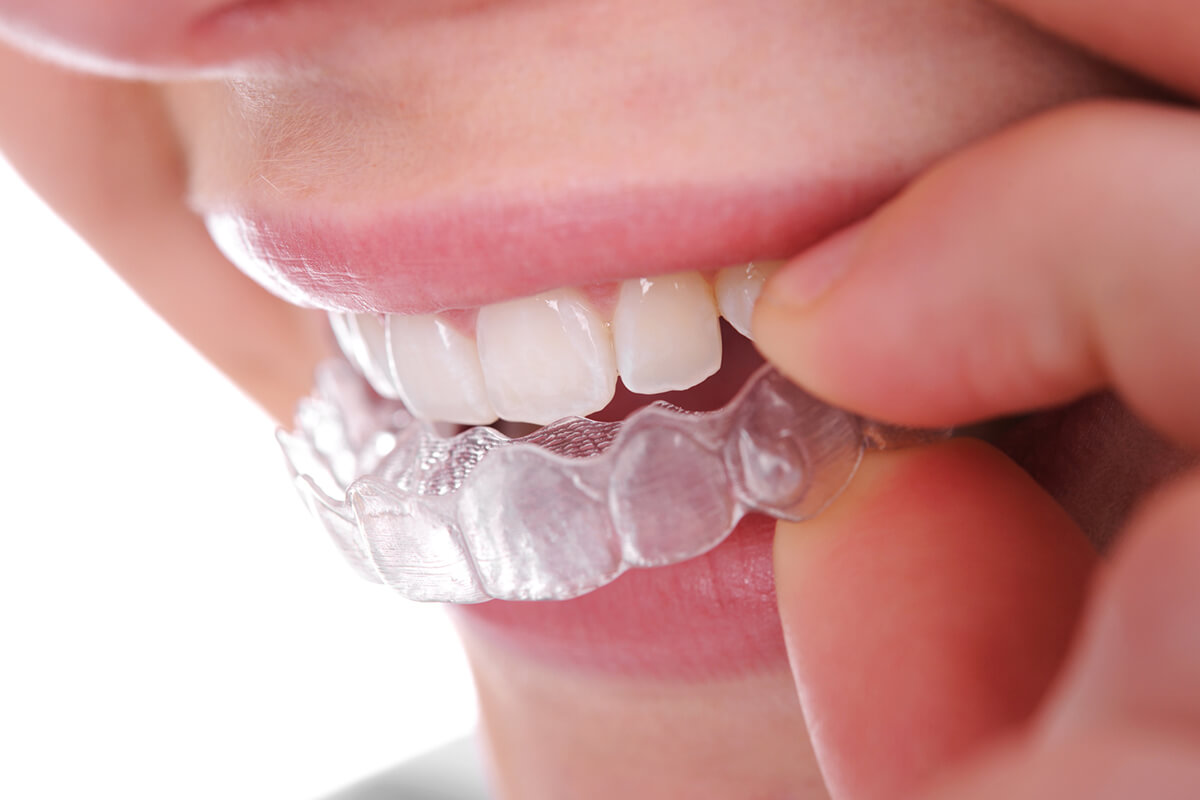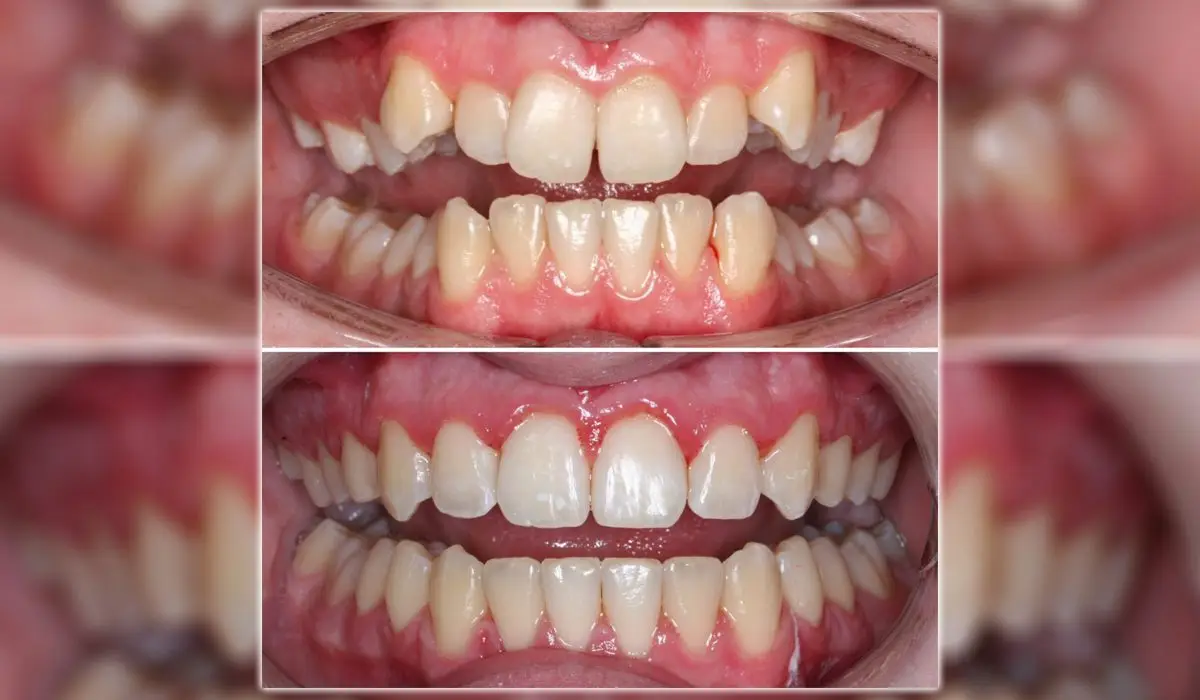Maintaining Oral Health While Utilizing Invisalign: Tips for a Smooth Experience
Maintaining Oral Health While Utilizing Invisalign: Tips for a Smooth Experience
Blog Article
Invisalign vs. Traditional Dental braces: Which Alternative Is Right for You?
When taking into consideration orthodontic treatment, the choice between Invisalign and conventional dental braces presents a number of crucial variables that merit mindful examination. Invisalign uses a very discreet choice with removable aligners, while conventional braces provide an extra noticeable yet effective option for serious misalignment.
Review of Treatment Choices

In contrast, typical dental braces include steel braces and wires that are bound to the teeth. This approach uses constant pressure in time to achieve alignment. While efficient for complex orthodontic issues, conventional dental braces require regular gos to for changes and can present difficulties in keeping dental health because of the trouble of cleansing about cables and brackets.
Both choices have their values, and the selection commonly pivots on specific oral conditions, way of living choices, and patient conformity. Eventually, consulting an orthodontic professional is vital for identifying one of the most appropriate therapy plan customized to individual demands. Understanding the subtleties of each alternative can considerably influence the overall success of orthodontic therapy.
Aesthetic Considerations
A substantial aspect influencing the choice in between Invisalign and conventional dental braces is the visual allure each therapy provides. Invisalign aligners are crafted from clear plastic, making them virtually unseen when used.
On the other hand, typical braces contain metal braces and wires, which can be extra obvious. While advancements in orthodontic modern technology have actually caused the development of smaller sized brackets and colored elastics, typical braces still keep an even more noticeable account. For some individuals, the presence of braces might hinder them from looking for needed treatment.
Eventually, the selection between Invisalign and typical braces may rest on individual preferences pertaining to appearances. Clients that focus on discretion often favor Invisalign, while those that are less worried regarding presence may choose for conventional dental braces. Recognizing the aesthetic ramifications of each alternative is important for making an educated choice that aligns with one's way of life and preferences.
Convenience and Convenience

In regards to ease, Invisalign aligners are detachable, allowing clients to enjoy top article their favored foods without limitation and preserve optimum dental hygiene. Cleaning and flossing are streamlined, as the aligners can be gotten during these regimens, whereas conventional dental braces need careful steering around braces and wires.
In contrast, standard dental braces necessitate normal changes, making them less hassle-free for those with busy routines. Overall, the comfort and ease of Invisalign make it an appealing option for many individuals looking for orthodontic treatment.
Treatment Period and Effectiveness
While both Invisalign and standard dental braces are effective in remedying oral misalignments, the duration Invisalign of therapy can differ considerably in between the 2 choices. Normally, Invisalign treatment can take anywhere from 12 to 18 months, depending on the intricacy of the case. The clear aligners work by progressively changing teeth right into their wanted positions, and normal follow-ups with an orthodontist aid make certain progression continues to be on the right track.
In comparison, conventional dental braces frequently require a longer dedication, typically ranging from 18 months to three years. This results from their set nature and making use of cords and brackets, which can be more effective for complicated instances and serious imbalances (Invisalign). The therapy efficiency of conventional braces is well-documented, as they permit precise changes and higher control over tooth movement
Eventually, the selection between Invisalign and traditional braces may rest on both the awaited treatment period and the particular dental concerns at hand. Consulting with an orthodontist is crucial, as they can provide tailored suggestions based on individual requirements, guaranteeing the selected approach aligns with preferred timeframes and end results.
Cost Comparison and Insurance Options
Cost plays a substantial duty in the decision-making process for individuals considering orthodontic therapy, whether going with Invisalign or typical dental braces. Usually, the price of Invisalign varieties from $3,000 to $8,000, while traditional dental braces normally cost in between $2,000 and $6,000. Aspects influencing these expenses include the intricacy of the case, the duration of treatment, and geographical place.
Insurance insurance coverage can substantially impact out-of-pocket costs. Many oral insurance strategies offer partial insurance coverage for orthodontic treatments, yet the specifics can vary commonly. It is essential for people to review their insurance plan to figure out the extent of protection for either alternative. Typically, standard braces may be extra frequently covered by insurance coverage strategies compared to Invisalign, which some insurance firms categorize as an aesthetic treatment.
Additionally, a number of orthodontic methods supply flexible payment strategies, making both treatment options much more easily accessible. People should ask about potential funding alternatives and price cuts for ahead of time settlements. Evaluating the total cost, including insurance advantages and layaway plan, is crucial for making an informed choice that straightens with both visual choices and spending plan considerations.

Conclusion
In summary, the option in between Invisalign and standard dental braces depends upon numerous aspects, including visual preferences, convenience, treatment period, and price. Invisalign supplies a very discreet, detachable option that assists in oral hygiene and dietary adaptability, while typical dental braces may be much more suitable for complicated oral issues you could try this out and often come with a lower price factor. Ultimately, assessment with an orthodontist is vital to evaluate individual conditions and figure out the most appropriate therapy alternative for accomplishing optimal oral positioning.
When considering orthodontic therapy, the option between Invisalign and typical braces offers numerous essential factors that warrant careful examination.Comparing Invisalign and typical braces discloses unique therapy choices for orthodontic correction.While both Invisalign and standard braces are effective in correcting oral imbalances, the duration of treatment can differ substantially in between the two alternatives.Cost plays a substantial role in the decision-making procedure for individuals taking into consideration orthodontic treatment, whether choosing for Invisalign or typical braces.In recap, the selection between Invisalign and standard dental braces pivots on numerous elements, consisting of visual preferences, comfort, therapy period, and cost.
Report this page